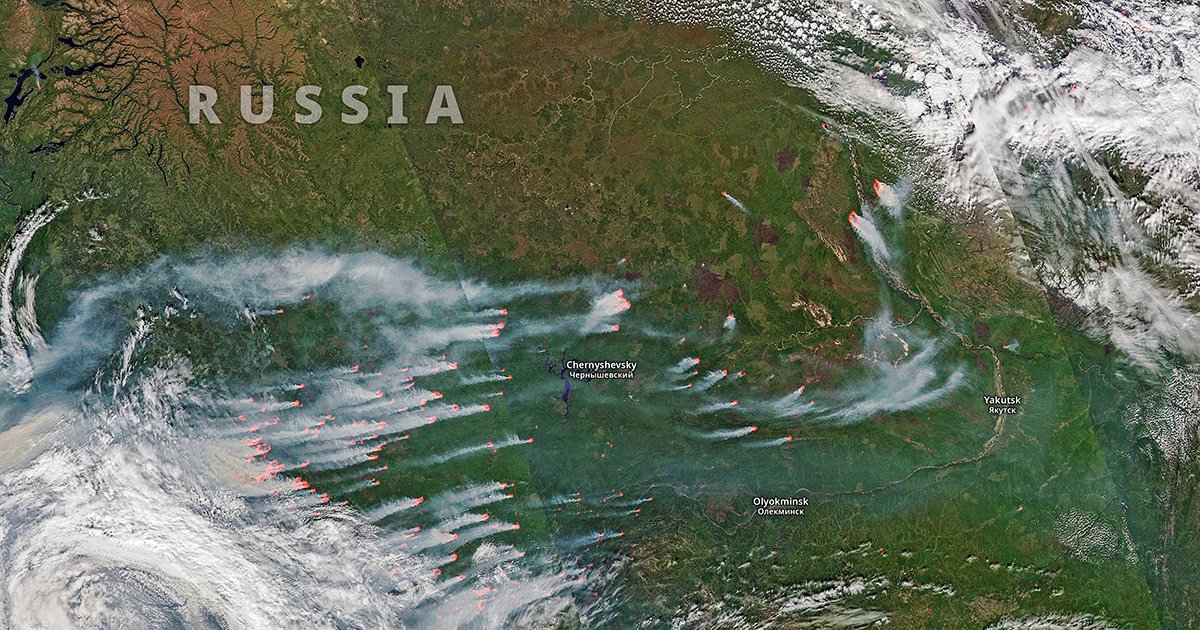
Arctic wildfires released more carbon dioxide into the atmosphere in June 2019 than the average annual amount released by all of Sweden, as the World Meteorological Society (WMO) reported.
The recent wildfires, that numbered in the hundreds, released more carbon dioxide than all the fires which occurred in the previous eight Junes combined. Fires of this intensity haven't been seen for over 10,000 years in the region.
According to the WMO, the unprecedented blazes reflect the hazards of climate change. As global temperatures rise and precipitation patterns change due to greenhouse gas emissions accumulating in the atmosphere, catastrophic forest fires are now becoming more likely.
Ancient boreal forests are drying out throughout the Arctic, because of heat waves and lack of rainfall. Therefore, fires can spread through them more rapidly and are more likely to consume significant tracts of land.
Some fires tracked by WMO satellites measure over 100,000 football fields in size. A fire even covered the same area as 300,000 football fields.
Unprecedented #wildfires in #Arctic. Over past 6 weeks @CopernicusEU #Atmosphere Monitoring Service (CAMS) has tracked more than 100 intense fires in the Arctic Circle. In June alone, these fires emitted 50 megatonnes of CO2 into the atmosphere = Sweden’s total annual emissions. pic.twitter.com/poQWzutgAA
— WMO | OMM (@WMO) July 12, 2019
Worldwide, forest fires are now becoming more common, intense, and long-lasting. They're also contributing to climate change more broadly.
Forests are carbon sinks, meaning they absorb enormous amounts of carbon dioxide from the air; however, as trees burn, they release carbon and can't store more carbon. As the WMO notes, forest fires in parts of Canada in 2014 almost halved the amount of carbon dioxide which had been stored that year in the region.
The Arctic is particularly vulnerable to fires stoked by climate change. Smoke particles from fires land on snow, letting more sunlight to be absorbed, which accelerates snowmelt and makes the region more prone to future fires. The polar regions are also warming twice as fast as the rest of the planet.
Along with worsening climate change, the forest fires raging in the Arctic have significant consequences on wildlife. Animals like caribou are being forced to flee their homes and move to new, potentially dangerous, houses habitats, and lichen, a critical source of food for many animals, is being destroyed.
Fires are also causing extensive air pollution, that can pose serious health problems for humans. According to Global Citizen, unless greenhouse gas emissions are curbed in the years ahead, they will likely keep getting worse.














COMMENTS